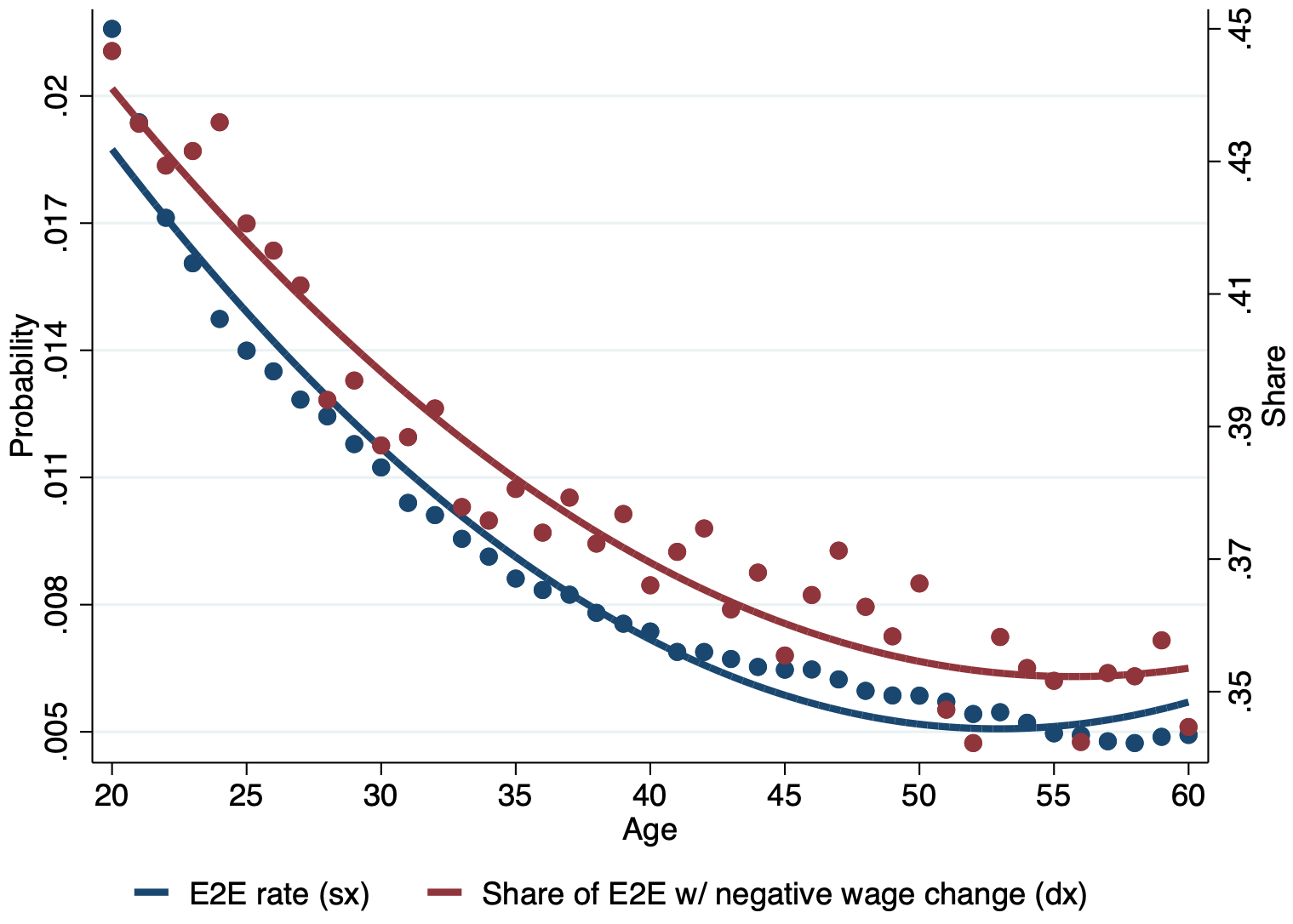
This project brings new evidence on the dynamics of employer-to-employer (E2E) transitions, one of the main sources of workers reallocation, wage gains over the life-cycle and productivity growth.
The standard view of job-to-job transitions interprets them as movements of workers who are climbing the ladder of their career, moving towards more productive and better paid jobs. Yet, there is evidence that a non-negligible share of job-to-job movements involves transitions to lower-paying occupations or to jobs that are less valuable for the workers, along different dimensions. Little is known about the mechanisms behind this phenomenon.
There are two main rationales why the dynamics of job-to-job transitions are key to our understanding of individual and aggregate labor market outcomes. First, workers moving from one job to another typically experience large wage gains, suggesting that E2E transitions represent a key vehicle for workers to move up the ladder. In a seminal paper, using annual longitudinal data, Topel and Ward (1992) document that in the US wage increases at job switches account for at least one-third of early career wage growth. In a similar vein, relying on the National Longitudinal Survey on Youth (NLSY), Bowlus and Neuman (2006) emphasize that on-the-job wage growth represents only a small fraction of the overall lifetime wage growth, highlighting instead the prominent role of job mobility. The second reason why job-to-job transitions may have important consequences for labor market and aggregate dynamics is that the associated wage gains likely reflect the reallocation of workers from less to more productive matches, with a resulting improvement in the allocation of resources and a positive effect on total factor productivity. In recent work, Gertler, Huckfeldt, and Trigari (2020) provide evidence in support of the hypothesis that procyclical E2E transitions are associated, on average, with both wage gains and match quality improvements.
While the common job-ladder setting provides a clear and intuitive interpretation of job-to-job transitions associated with wage gains, in the data a large fraction of job-to-job movements is instead characterized by wage cuts. Focusing on a large set of countries, Jolivet, Postel-Vinay, and Robin (2006) found that between 25 and 40 percent of job-to-job movements are indeed associated with a wage cut. Studying the US labor market, Bowlus and Neuman (2006) found that 40 percent of job-to-job transitions result in lower wage and almost 30 percent in a wage decline above 5 percent. Similar results are found by Connolly and Gottschalk (2008), who described how in the US labor market 44 percent of job-to-job transitions of male workers result in worse-paying jobs. Along the same line, a recent contribution by Caplin et al. (2020) on the Danish labor market highlights how about 50 percent of job-to-job movements are associated with wage decline.
Although employer-to-employer transitions that involve wage declines may initially appear inconsistent with standard job-ladder dynamics, certain cases may justify an initial wage reduction. This could occur when the new job provides a higher value of the job – which can arise for instance from employment stability, future wage gains, or better future employment opportunities. Such transitions can still be interpreted within a job-ladder framework and may align with compensating differential mechanisms (Sorkin, 2018; Lehmann, 2023).
Within this context, this project focuses on the Italian labor market as a case study and brings new evidence on the dynamics of E2E transitions, along three different dimensions. We first provide evidence about the average level and the cyclicality of the job-to-job transition rate, both in the aggregate and dis-aggregated by worker characteristics, firm characteristics (age, size, level of assets, and average productivity) and contractual classification (open-ended and fixed-term contracts). We then study changes in wages associated with job-to-job transitions and the channels that could potentially explain wage gains and wage cuts. The last part of the paper develops a quantitative macro-model to measure the job-specific value, which is indeed not directly observable in the data. This value is assumed to be a function of wages and employment security. Using the model, we evaluate which are the most relevant channels driving wage reductions when workers change their employer from one period to the next.